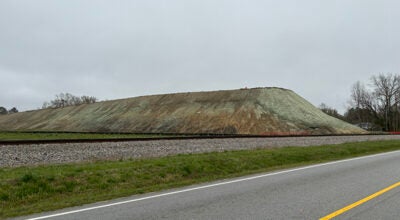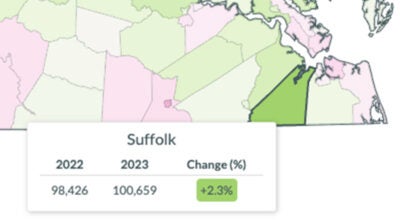The war ends in Suffolk
Published 9:04 pm Saturday, April 25, 2015
By Kermit Hobbs Jr.
Editor’s Note: To mark the 150th anniversary of the Siege of Suffolk two years ago, the Suffolk News-Herald featured a multi-part series by Suffolk historian Kermit Hobbs detailing the 23-day ordeal. But even with the end of the Civil War in April 1865, the city was still suffering. Today, Hobbs explores Suffolk after the war ended.
From the spring of 1862 to mid-1863, Union forces occupied the town of Suffolk and the surrounding country. In the spring of 1863, Confederates under the command of General James Longstreet drove the Union troops back into the safety of their defensive earthworks that surrounded the town.
Longstreet’s three-week “siege” of Suffolk was primarily intended as a foraging campaign, but the confrontation with the Union troops resulted in a great deal of suffering among the civilian population of Suffolk and Nansemond County.
By the time the Yankees left in July 1863, most of the civilian population had left the town. Many white families had taken refuge in other areas farther removed from the fighting, and many former slaves had fled north or to the protection of the Union forces. Some of the able-bodied black men had joined the United States Colored Troops to fight for their freedom.
A month later, The Troy (New York) Daily Whig gave a description of the town. “Suffolk is now said to be a howling waste of burnt camp debris, tenantless houses, mourning quasi widows, Richmond prices, dismantled fortifications, general gloom and despondency. An occasional rebel cavalryman, who has friends in town, may be seen upon the now almost deserted streets. The Rebs do not want Suffolk. It is of no use to them without Norfolk, and Portsmouth, and they will make no effort to retain it in their possession.”
This state of affairs lasted for nearly two years before the fighting mercifully ended. Half a century later, Mrs. Emma McGuire Ferguson, a Suffolk native, recalled what happened when the end finally did come.
“[On] the 11th of April 1865… it was rumored that that Gen’l Lee had surrendered April 9th at Appomattox Court House. The people were very loath to believe this sad intelligence, but in a few days it was authentically announced. Several days after the surrender the Yankees again occupied our town, and the first night of their arrival Jeff Davis was burned in effigy, and there was great rejoicing in the Federal camps. In a short time what few men were left of the companies that went from Suffolk, being paroled, came home. What desolation they found! Every farm-house within six or seven miles of town had been burned during the siege of Longstreet… The refugees now returned and found their homes wrecked.
“The few soldiers that returned home having no other clothing than the worn and often ragged uniforms used by them in long and hard service, and possessing no means with which to purchase other clothes, were compelled to wear them. Several days after their arrival an order was issued that they must not appear on the streets with the Confederate buttons on their clothes and that they must either cover them or replace them with others.”
For some little time nothing was done beyond “reckoning up the cost.” Every man and woman who had not lost a relative was at least minus a friend; property of all kinds had depreciated in value; the once fertile plain had become a wilderness; the money issued by the Confederate States had become waste paper, and gold was at a ruinous premium; provisions were scarce and very dear; credit was annihilated; and financial stability meant nothing. In short the whole South was ruined for the time being.
“But there were some people left here — enough to start a little world, and they were of the right kind. Courage, fortitude, industry and perseverance were their leading characteristics, and various commercial enterprises were inaugurated before the echoes of Yankee retiring footsteps had fairly died away. Trade of all kinds speedily revived, and the neglected soil was once more ‘with verdure clad.’ Our town, and the many advantages she offered, soon attracted such favorable attention that our population more than doubled in the decade between the years of 1870 and 1880.
“Suffolk has had her full share of misfortunes to contend with: panics, large and ruinous ‘hard times’ and the like — but it is not too much to say of her today that she is as happy and prosperous as any town of her size in the Land of the Sunny South, if not in the whole United States.”
Kermit Hobbs Jr. is an accomplished Suffolk historian and businessman. Email him at khobbs5@aol.com.






